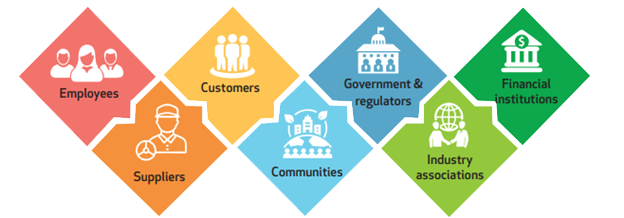Stakeholder Collaboration
What is Stakeholder Collaboration?
Definition:
Staffing Agency Automation refers to the application of technology and automated processes to optimize the recruitment, management, and deployment of personnel through staffing agencies. This automation streamlines various aspects of the staffing process, including candidate sourcing, onboarding, and performance tracking, allowing agencies to enhance their operations and provide efficient workforce solutions to businesses.
Analogy:
Imagine Staffing Agency Automation as a skilled talent coordinator. Similar to how a coordinator efficiently manages the placement and well-being of staff in an organization, automation in staffing agencies handles tasks such as candidate screening, skills assessment, and onboarding to ensure seamless and effective workforce solutions for businesses.
Further Description:
Staffing Agency Automation encompasses a range of activities within the recruitment and personnel management lifecycle, including:
Candidate Sourcing and Screening: Automating the process of sourcing potential candidates, screening resumes, and evaluating qualifications to identify the most suitable candidates for job placements.
Onboarding and Compliance: Streamlining onboarding procedures, including paperwork, compliance checks, and training, to ensure new hires are integrated smoothly into client organizations.
Performance Tracking and Analytics: Utilizing automated tools to monitor and analyze employee performance, gather insights, and enhance the overall efficiency of workforce management.
Communication and Feedback: Automating communication channels for feedback between staffing agencies, clients, and candidates, ensuring a transparent and collaborative approach to workforce solutions.
Why is Staffing Agency Automation Important?
Efficiency and Timeliness: Automation accelerates the recruitment process, allowing staffing agencies to quickly respond to client needs and fill job positions promptly.
Quality Assurance: Automated screening processes help ensure that candidates possess the required skills and qualifications, leading to higher-quality placements.
Compliance and Risk Management: Automation aids in ensuring that onboarding processes comply with legal requirements, minimizing the risk of regulatory issues.
Enhanced Client Relationships: Automated communication and reporting strengthen relationships between staffing agencies and clients by providing real-time updates and insights into workforce performance.
Examples and Usage:
Applicant Tracking Systems (ATS): These tools automate candidate sourcing, screening, and tracking, streamlining the recruitment process for staffing agencies.
Onboarding Platforms: Automated onboarding solutions simplify the paperwork, training, and compliance aspects of bringing new hires on board.
Performance Management Software: Tools that automate the tracking and evaluation of employee performance, providing data-driven insights for improved workforce management.
Key Takeaways:
- Staffing Agency Automation involves leveraging technology to streamline recruitment and personnel management.
- It includes candidate sourcing, onboarding, performance tracking, and communication within the staffing lifecycle.
- Benefits include increased efficiency, quality assurance, compliance, and improved client relationships.
- Examples of Staffing Agency Automation tools include ATS, onboarding platforms, and performance management software.
Table of Contents





